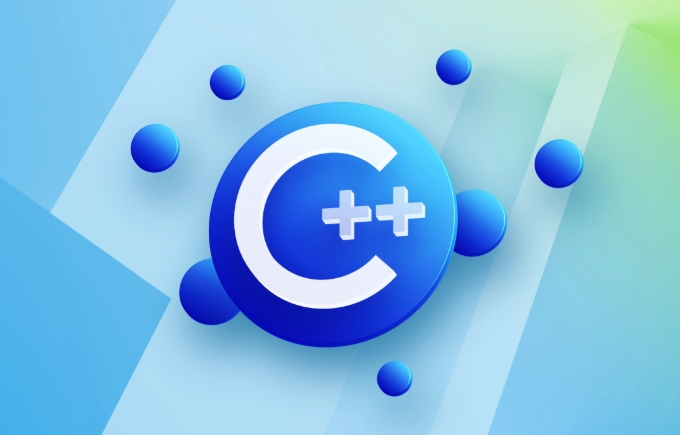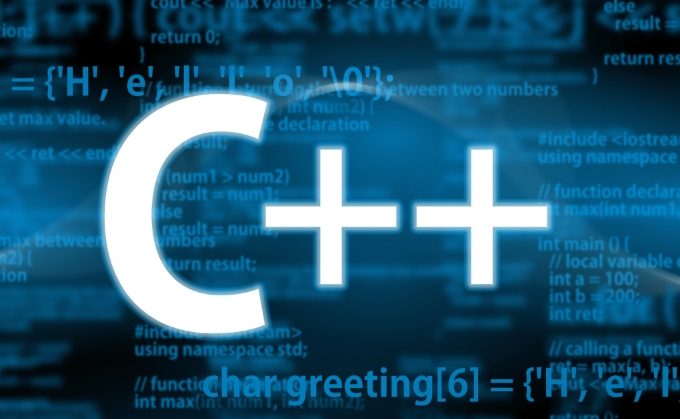As a Java developer, you need to pay attention to the following points: 1. Memory management needs to be manually controlled, and new/delete pairing is used. It is recommended to use intelligent pointers to automatically manage; 2. C exception handling is not mandatory, try/catch is optional, and you need to pay attention to resource release; 3. The class is different from the inheritance model, and the default access control is private, which supports multiple inheritance, and virtual functions achieve polymorphism; 4. STL is similar to Java collection library, vector corresponds to ArrayList, map is ordered by default, and iterators are used for traversal. Understanding the basic usage of RAII, smart pointers and STL can effectively avoid common mistakes.

If you are already familiar with Java and want to get started with C now, you don’t need to start from scratch. C and Java have many similarities, such as syntax structures, object-oriented features, etc., but there are also some key differences, especially in memory management, type systems and standard libraries. This article will focus on several aspects that you need to pay attention to as a Java developer.

Memory management: manual vs automatic
Java uses garbage collection mechanisms (GC) to automatically manage memory, while C requires you to control memory allocation and release yourself.

new/delete and new[]/delete[] to be used together
In Java you are used to creating objectsnew, but in C, you need to remember to manually release it withdelete. If it is an array,delete[]must be used.-
Smart Pointers are recommended
C 11 introducesstd::unique_ptrandstd::shared_ptr, which can automatically help you manage memory lifecycles, and is similar to Java-like reference mechanisms.
For example:
std::unique_ptr<MyClass> obj = std::make_unique<MyClass>(); // No need to delete manually, it will be automatically released outside the scope
There is no runtime exception mandatory handling mechanism
Java requires you to catch or throw checked exceptions, but C does not have this mechanism.
try/catch is optional
C supports exception handling, but is not mandatory. Many projects even disable exceptions completely for improved performance and predictability.Pay attention to whether the function may throw an exception
If the function you call may throw exceptions, it is best to make sure the resource is released correctly (RAII technology is important).
Classes are slightly different from inheritance models
While both support classes and inheritance, C provides more flexibility and more complexity.
Access control is private by default
In Java, the default is package-level private, while in C, the default member of class is private, and the struct is public.Multiple inheritance is allowed
Java only supports single inheritance, but C allows one class to inherit multiple base classes. Pay attention to the diamond inheritance issue when using it.Virtual functions and interface implementations are different
In C, polymorphism is implemented by declaring virtual functions. Pure virtual functions are similar to Java's abstract methods:class Interface { public: virtual void doSomething() = 0; // Abstract method similar to Java };
Comparison between STL and Java Collection Library
Java has rich collection classes such as ArrayList , HashMap , etc. C's STL (Standard Template Library) provides similar functions, but the usage is somewhat different.
vector similar to ArrayList
std::vector<int> vec; vec.push_back(10);
map is similar to HashMap, but is ordered by default (based on red and black trees)
If you care more about performance than order, you can use
std::unordered_map.Iterator traversal methods are different
Java enhanced for loops can also be used in C (from C 11):
for (const auto& item : myVector) { std::cout << item << std::endl; }
Basically that's it. When you first come into contact with C, the most prone thing to make mistakes is forgetting to free memory, misuse pointers, and unfamiliar with STL. However, as long as you understand the basic usage of RAII, smart pointers and STL, you can write safe and efficient code.
The above is the detailed content of C tutorial for experienced Java developers. For more information, please follow other related articles on the PHP Chinese website!

Hot AI Tools

Undress AI Tool
Undress images for free

Undresser.AI Undress
AI-powered app for creating realistic nude photos

AI Clothes Remover
Online AI tool for removing clothes from photos.

Clothoff.io
AI clothes remover

Video Face Swap
Swap faces in any video effortlessly with our completely free AI face swap tool!

Hot Article

Hot Tools

Notepad++7.3.1
Easy-to-use and free code editor

SublimeText3 Chinese version
Chinese version, very easy to use

Zend Studio 13.0.1
Powerful PHP integrated development environment

Dreamweaver CS6
Visual web development tools

SublimeText3 Mac version
God-level code editing software (SublimeText3)
 Using std::chrono in C
Jul 15, 2025 am 01:30 AM
Using std::chrono in C
Jul 15, 2025 am 01:30 AM
std::chrono is used in C to process time, including obtaining the current time, measuring execution time, operation time point and duration, and formatting analysis time. 1. Use std::chrono::system_clock::now() to obtain the current time, which can be converted into a readable string, but the system clock may not be monotonous; 2. Use std::chrono::steady_clock to measure the execution time to ensure monotony, and convert it into milliseconds, seconds and other units through duration_cast; 3. Time point (time_point) and duration (duration) can be interoperable, but attention should be paid to unit compatibility and clock epoch (epoch)
 How to get a stack trace in C ?
Jul 07, 2025 am 01:41 AM
How to get a stack trace in C ?
Jul 07, 2025 am 01:41 AM
There are mainly the following methods to obtain stack traces in C: 1. Use backtrace and backtrace_symbols functions on Linux platform. By including obtaining the call stack and printing symbol information, the -rdynamic parameter needs to be added when compiling; 2. Use CaptureStackBackTrace function on Windows platform, and you need to link DbgHelp.lib and rely on PDB file to parse the function name; 3. Use third-party libraries such as GoogleBreakpad or Boost.Stacktrace to cross-platform and simplify stack capture operations; 4. In exception handling, combine the above methods to automatically output stack information in catch blocks
 What is a POD (Plain Old Data) type in C ?
Jul 12, 2025 am 02:15 AM
What is a POD (Plain Old Data) type in C ?
Jul 12, 2025 am 02:15 AM
In C, the POD (PlainOldData) type refers to a type with a simple structure and compatible with C language data processing. It needs to meet two conditions: it has ordinary copy semantics, which can be copied by memcpy; it has a standard layout and the memory structure is predictable. Specific requirements include: all non-static members are public, no user-defined constructors or destructors, no virtual functions or base classes, and all non-static members themselves are PODs. For example structPoint{intx;inty;} is POD. Its uses include binary I/O, C interoperability, performance optimization, etc. You can check whether the type is POD through std::is_pod, but it is recommended to use std::is_trivia after C 11.
 How to call Python from C ?
Jul 08, 2025 am 12:40 AM
How to call Python from C ?
Jul 08, 2025 am 12:40 AM
To call Python code in C, you must first initialize the interpreter, and then you can achieve interaction by executing strings, files, or calling specific functions. 1. Initialize the interpreter with Py_Initialize() and close it with Py_Finalize(); 2. Execute string code or PyRun_SimpleFile with PyRun_SimpleFile; 3. Import modules through PyImport_ImportModule, get the function through PyObject_GetAttrString, construct parameters of Py_BuildValue, call the function and process return
 What is function hiding in C ?
Jul 05, 2025 am 01:44 AM
What is function hiding in C ?
Jul 05, 2025 am 01:44 AM
FunctionhidinginC occurswhenaderivedclassdefinesafunctionwiththesamenameasabaseclassfunction,makingthebaseversioninaccessiblethroughthederivedclass.Thishappenswhenthebasefunctionisn’tvirtualorsignaturesdon’tmatchforoverriding,andnousingdeclarationis
 How to pass a function as a parameter in C ?
Jul 12, 2025 am 01:34 AM
How to pass a function as a parameter in C ?
Jul 12, 2025 am 01:34 AM
In C, there are three main ways to pass functions as parameters: using function pointers, std::function and Lambda expressions, and template generics. 1. Function pointers are the most basic method, suitable for simple scenarios or C interface compatible, but poor readability; 2. Std::function combined with Lambda expressions is a recommended method in modern C, supporting a variety of callable objects and being type-safe; 3. Template generic methods are the most flexible, suitable for library code or general logic, but may increase the compilation time and code volume. Lambdas that capture the context must be passed through std::function or template and cannot be converted directly into function pointers.
 What is a null pointer in C ?
Jul 09, 2025 am 02:38 AM
What is a null pointer in C ?
Jul 09, 2025 am 02:38 AM
AnullpointerinC isaspecialvalueindicatingthatapointerdoesnotpointtoanyvalidmemorylocation,anditisusedtosafelymanageandcheckpointersbeforedereferencing.1.BeforeC 11,0orNULLwasused,butnownullptrispreferredforclarityandtypesafety.2.Usingnullpointershe
 How does std::move work in C ?
Jul 07, 2025 am 01:27 AM
How does std::move work in C ?
Jul 07, 2025 am 01:27 AM
std::move does not actually move anything, it just converts the object to an rvalue reference, telling the compiler that the object can be used for a move operation. For example, when string assignment, if the class supports moving semantics, the target object can take over the source object resource without copying. Should be used in scenarios where resources need to be transferred and performance-sensitive, such as returning local objects, inserting containers, or exchanging ownership. However, it should not be abused, because it will degenerate into a copy without a moving structure, and the original object status is not specified after the movement. Appropriate use when passing or returning an object can avoid unnecessary copies, but if the function returns a local variable, RVO optimization may already occur, adding std::move may affect the optimization. Prone to errors include misuse on objects that still need to be used, unnecessary movements, and non-movable types







